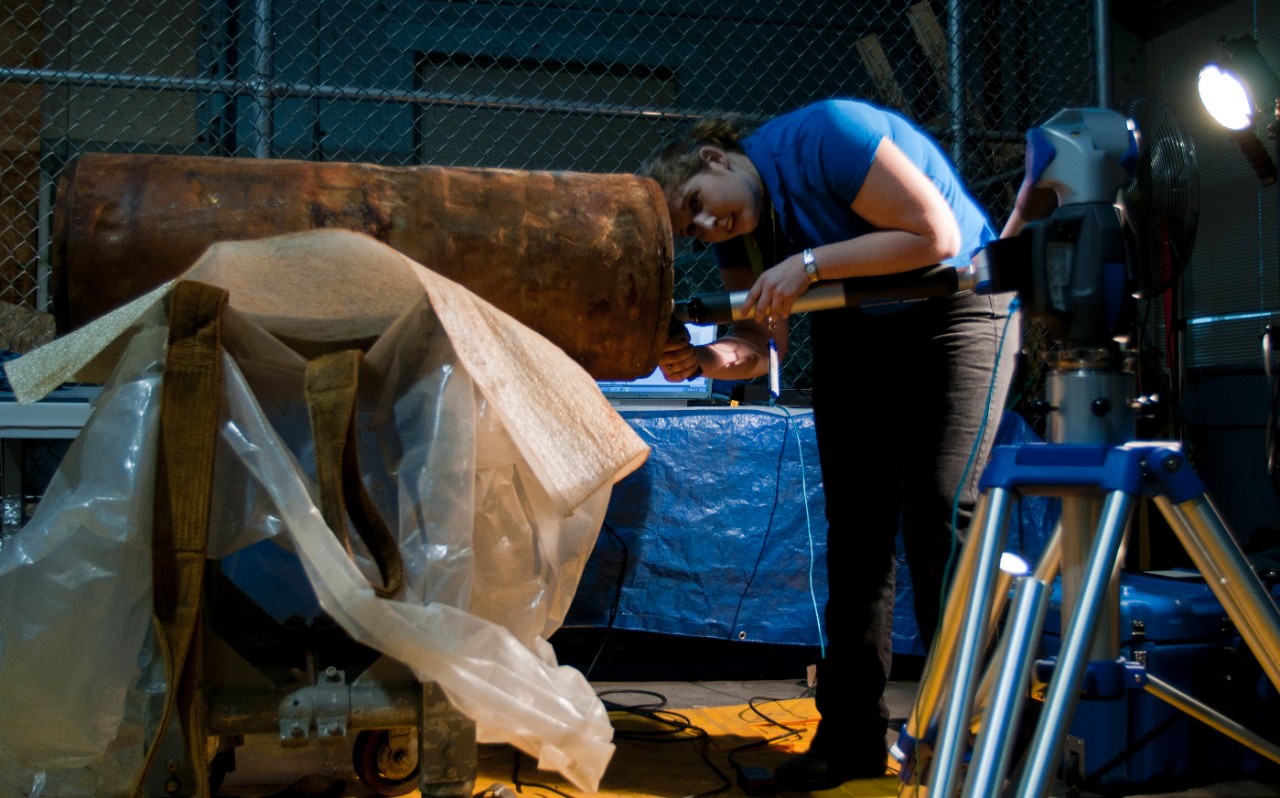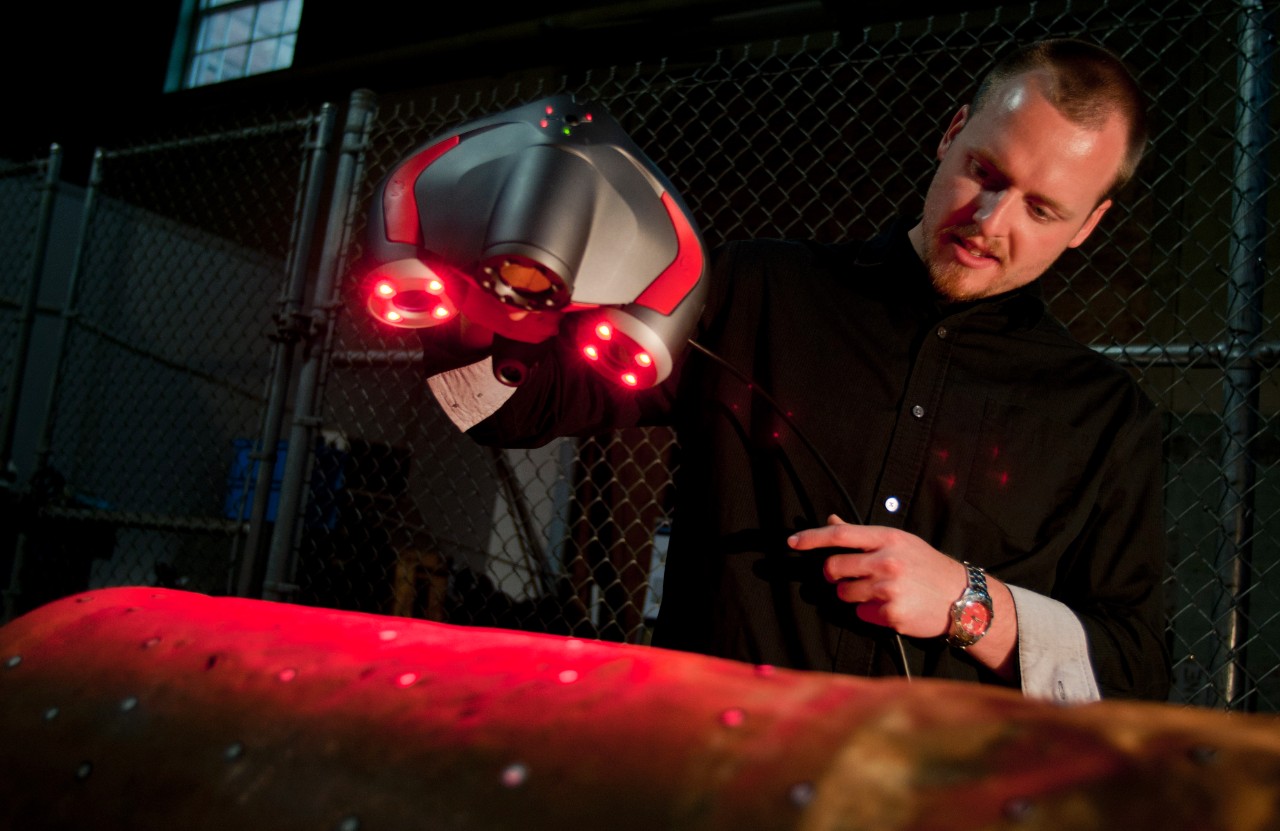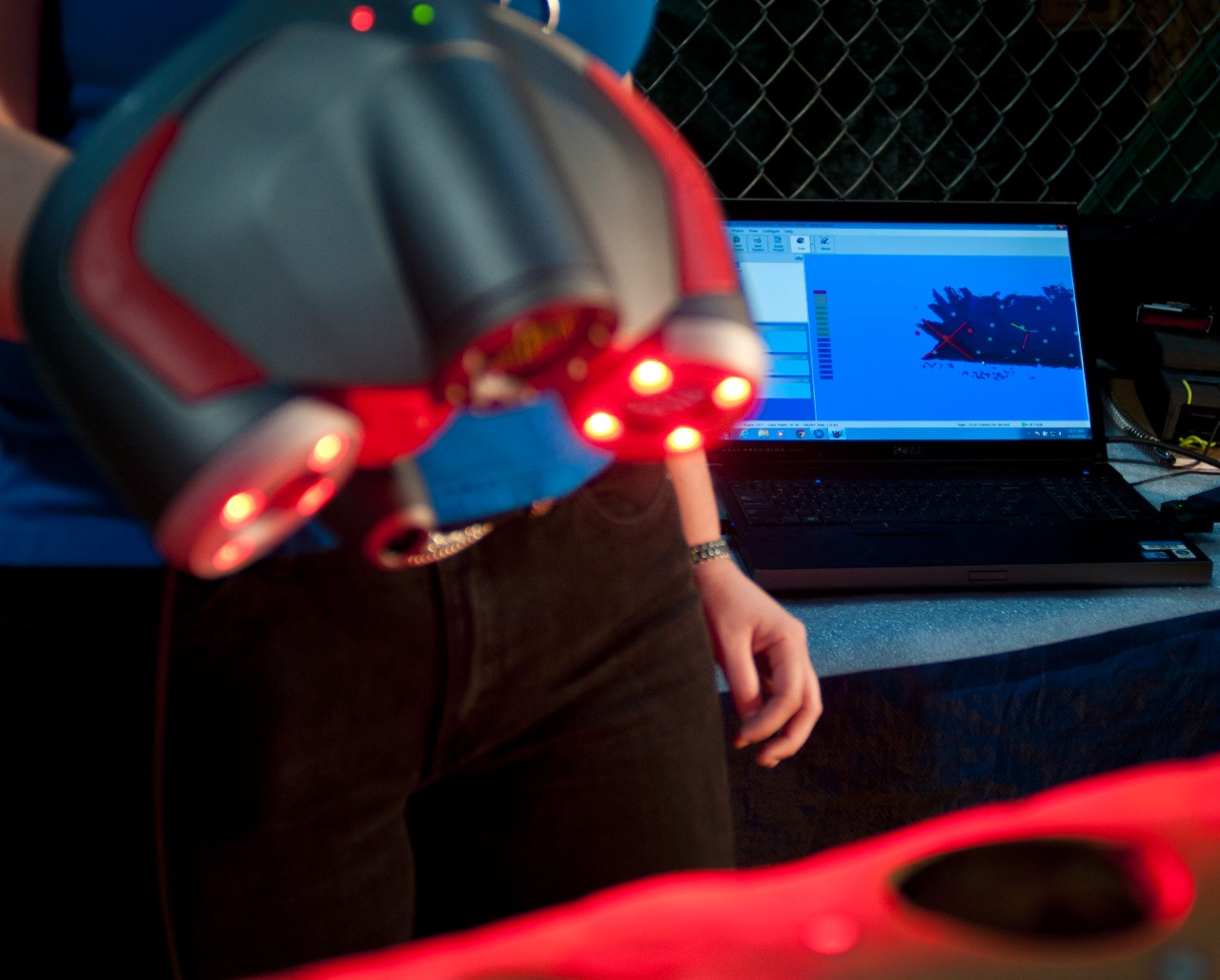
WASHINGTON (NNS) -- Conservators and scientists from Naval History and Heritage Command's Underwater Archeology Branch (UAB) and Naval Surface Warfare Center Carderock Division (NSWCCD) collaborated to begin a three dimensional laser scanning of the Howell Torpedo, April 30.
"[The torpedo] was lost in 1899 during a training exercise on board USS Iowa and recovered in May 2013 by the Navy's marine mammal program," said Kate Morrand, UAB's senior conservator and laboratory manager. "It is now undergoing treatment at the archaeology and treatment lab."
3D laser scanning is a non-contact, non-destructive technology that digitally captures the shape of physical objects using light. The scanner captures a physical object's exact size and shape into the computer world as a digital 3-dimensional representation.
"It's good for visualization," said Cifelli. "We can also compare this torpedo to how it's supposed to be designed to see deformations and see how it's changed over the last 115 years."
Once the scan is complete UAB plans to use it as an online interactive education and outreach tool.

The Naval History and Heritage Command, located at the Washington Navy Yard, is responsible for the preservation, analysis, and dissemination of U.S. naval history and heritage. It provides the knowledge foundation for the Navy by maintaining historically relevant resources and products that reflect the Navy's unique and enduring contributions through our nation's history, and supports the Fleet by assisting with and delivering professional research, analysis, and interpretive services. NHHC is composed of many activities including the Navy Department Library, the Navy Operational Archives, the Navy art and artifact collections, underwater archeology, Navy histories, nine museums, USS Constitution repair facility and the historic ship Nautilus.
For more news from Naval History and Heritage Command, visit www.navy.mil/local/navhist/.



